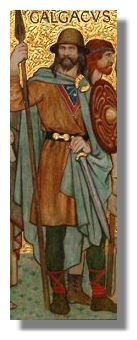
'Paradise' found in Brooklyn Museum: During the reign of the first Roman emperor Augustus, Carthage, once Rome's greatest enemy, became the capital of the Roman African Proconsularis. Important as a port and an invaluable source of grain and trade goods, Carthage became the home of very wealthy Roman citizens, including a large population of wealthy Roman Jews.
In the late 19th century, a captain in the occupying French army, Ernest de Prudhomme built a villa in the town of Hammam-Lif, a small town on the peninsula about 50 kilometers from Tunis. Wishing to add a new garden to his villa, Prudhomme instead discovered the remains of a Jewish synagogue of the Roman period, with beautiful mosaics of natural, personal, and religious themes inlaid in the floors, perfectly preserved beneath the villa?s yard.
This synagogue must have been a lovely place, if the mosaics in 'Tree of Paradise: Jewish Mosaics from the Roman Empire' are any indication. The floor of the main sanctuary must have looked like a Garden of Eden with menorahs. The mosaic panels overflow with roosters, partridges, ducks, lions, hyenas, fish, vines, flowers and date palms (the Tree of Paradise).
"In 1905, the Brooklyn Museum received 21 of these mosaics excavated in the North African ruins of the first Roman-era synagogue to be uncovered in modern times.
Now on exhibit until June 4, 2006, these mosaics are as fresh-looking as the day they were made -- mosaics keep well -- about 1,500 years ago in the city of Naro, not terribly far from the ancient stronghold of Carthage, in Tunisia. An inscription on one in Latin indicates they were donated to the synagogue by Julia of Naro. These mosaics are evidence that, although the Roman empire continued a policy of non-tolerance towards Jews throughout this period, in some places around the Mediterranean, Jewish people prospered.




 field were the vast legions of the mighty Roman Empire. On the other, a 30,000-strong confederate army of Caledonians ? our Scottish ancestors. This encounter, which became known as Mons Graupius, was a key moment for the Romans in their almighty struggle to conquer the whole of Britain. For the Scots, it was a battle for survival against a brutal occupation.
field were the vast legions of the mighty Roman Empire. On the other, a 30,000-strong confederate army of Caledonians ? our Scottish ancestors. This encounter, which became known as Mons Graupius, was a key moment for the Romans in their almighty struggle to conquer the whole of Britain. For the Scots, it was a battle for survival against a brutal occupation.





















